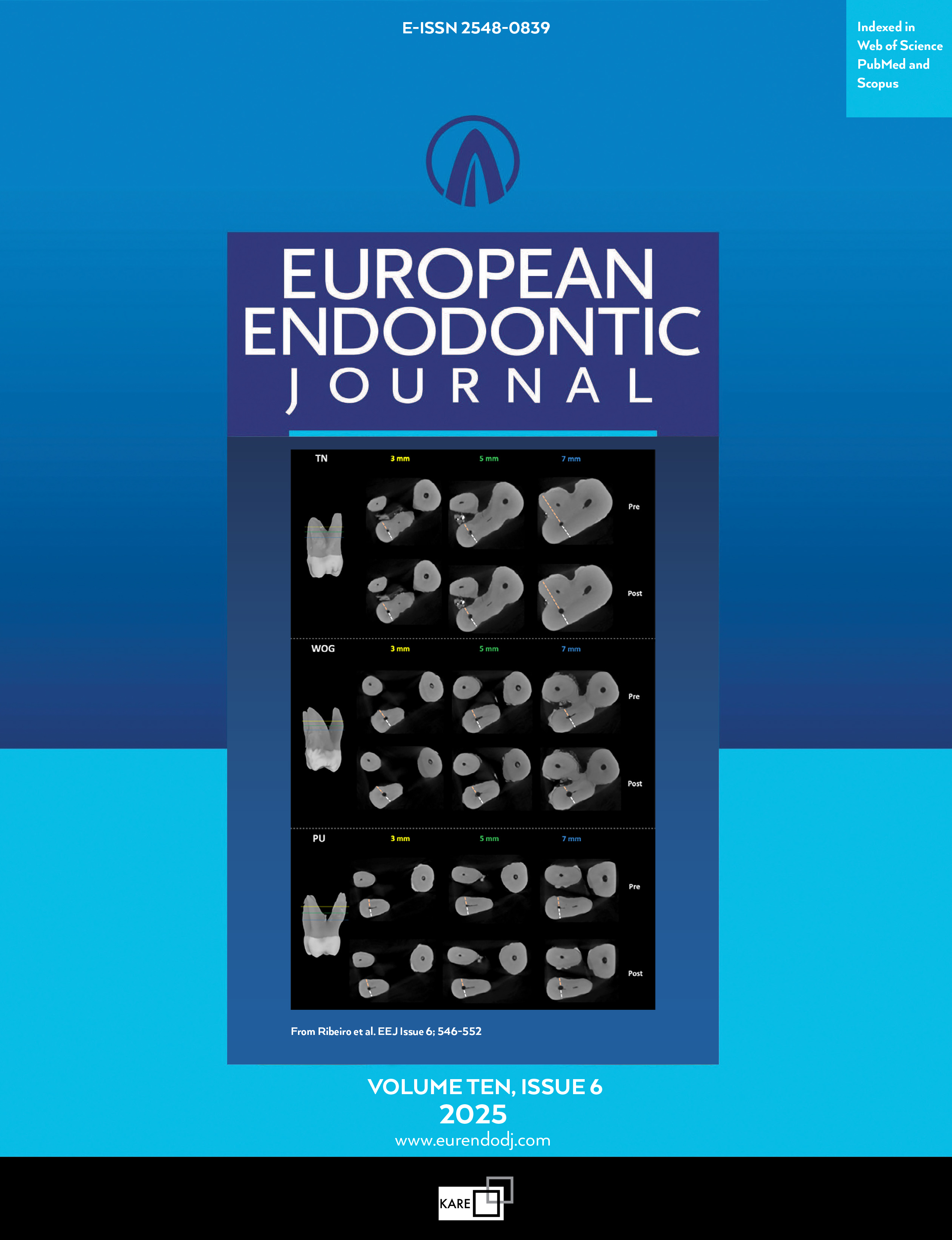Metrics
2024 IMPACT FACTOR
5 year Impact Factor
Eigenfactor Score
2024 CiteScore
Journal Citation Reports
(Clarivate 2025, JIF Rank)
Evaluation of Dental Students Skills Acquisition in Endodontics Using a 3D Printed Tooth Model
Ove Peters1, Raymond Scott2, Ana Arias3, Ella Lim2, Frank Paque4, Sam Almassi2, Samer Hejlawy21Department of Endodontics, University of the Pacific, Arthur A. Dugoni School of Dentistry, San Francisco, CA, USA; University of Queensland, School of Dentistry, Brisbane, Qld, Australia2Department of Endodontics, University of the Pacific, Arthur A. Dugoni School of Dentistry, San Francisco, CA, USA
3Department of Endodontics, University of the Pacific, Arthur A. Dugoni School of Dentistry, San Francisco, CA, USA; Department of Conservative Dentistry, Complutense University, Madrid, Spain
4Department of Preventive Dentistry, Periodontology and Cariology, School of Dentistry, University of Zurich Dental School, Zurich, Switzerland
Objective: The purpose of this prospective quantitative study was to assess the improvement of skills among pre-clinical dental students who practiced root canal obturation on a 3D-printed tooth model.
Methods: Preclinical students at the dental school (n=145) enrolled in the 2-week endodontic rotation course were invited to participate in the study. Four alphabetically distributed intact groups of first-year students were randomly allocated to either the control or the experimental group that obturated canals of a 3D-printed tooth. The plastic model was obtained from a microCT scan and based on an STL data set. The model was an identical replica of a natural mandibular molar that had been instrumented, ready for obturation. The control group did not obturate the tooth model but received identical instruction. Later in the course all students obturated an extracted human mandibular molar tooth. Technical obturation quality was assessed by two blinded evaluators. Radiographs were used to evaluate obturation length and density. Inter-observer reliability of average performance scores was calculated with the intra-class correlation coefficient for both consistency and absolute agreement. Obturation skills of those who practiced with the model were statistically compared to students who did not use the model with the Mann-Whitney U-test.
Results: Inter-observer reliability was very high for both consistency and absolute agreement. No significant differences were found in obturation skills between the experimental and control group (P>0.05).
Conclusion: Under the condition of this study, dental students obturation skills did not significantly improve by further practicing obturation using a 3D-printed model. (EEJ-2021-05-084)
Manuscript Language: English
(834 downloaded)


